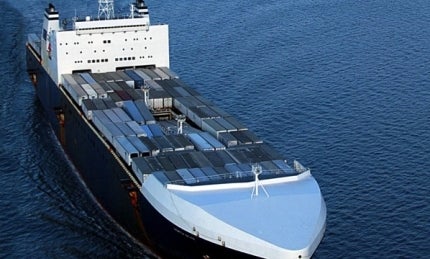
Totem Ocean Trailer Express (TOTE) has contracted General Dynamics NASSCO to convert the two ORCA class trailer ships to enable them to run on liquefied natural gas (LNG). The contract was awarded in January 2014.
Conversion of the two ships to LNG propulsion is expected to take four years. In August 2012, the United States Coast Guard (USCG) and Environmental Protection Agency (EPA) granted TOTE a permit to waiver the Emissions Control Area (ECA) fuel sulphur content requirements of MARPOL Annex VI regulation 14.4 during the conversion period.
The total investment for the conversion of the two ships is expected to exceed $80m.
ORCA class trailer ships
The two ORCA class trailer ships Midnight Sun and North Star were constructed by NASSCO and were commissioned in April 2003 and August 2003 respectively. They are assigned +A1 (E), +MS, ACCU classifications by ABS. The ships operate between Tacoma in Washington State and Anchorage in Alaska.
Each of the ORCA ships currently run on twin-screw diesel-electric propulsion systems with a combined installed capacity of 52.2MW each. The vessels’ main engines include four MAN B&W 9L 58/64 each and two MAN B&W 9L 27/38 each, generating 400rpm and 720rpm respectively. The electric propulsion system is of the Alstom 6.6kV type. The diesel engines are capable of operating on both heavy fuel oil (HFO) and marine diesel oil.
ORCA LNG propulsion conversion
LNG conversion will enable the ships to reduce sulphur oxide (SOx) emission by 100%, particulate matter (PM) by 91%, nitrogen oxide (NOx) by 90% and carbon dioxide (CO2) by 35%. Bunkering activities for the two ships will be carried out at Tacoma, Washington.
The project will equip each of the vessels with four 12-cylinder Wartsila 50DF dual-fuel engines and generator sets. The engines can operate using either LNG, HFO or light fuel oil (LFO).
The vessels will also be equipped with two 1,100m³ LNG fuel storage tanks each, as well as ancillary automation and fuel gas handling systems (LNGPac) to be supplied by Wartsila. The cryogenic valves for the vessels will be supplied by Bestobell Marine.
ORCA class vessel design
Each of the ORCA vessels has an overall length of 839ft, breadth of 118ft, depth of 90m and draft of 29.6m. The length between perpendiculars is 792ft. The vessels can travel at a speed of 24k and can accommodate 35 people including 22 crew.
With a cargo deck area of 360,000ft² each, the roll-on/roll-off (RO/RO) ships can carry 200 cars each. The ships feature 13 internal ramps and six decks each. Each of the two vessels is also equipped with a sewage treatment plant, a fresh water ballast system and de-icing systems.
Related content
Port Canaveral, Brevard, Florida, United States of America
Port Canaveral in Brevard County, Florida, is the second busiest cruise port in the world.
Equipment onboard each vessel includes eight self-contained electro-hydraulic mooring winches, two anchor windlasses, two high-holding-type steel anchors, 24 winches for shore-side ramp handling, seven hydraulically operated internal cargo hold doors and six sideport openings without doors.
Navigation and communication systems onboard each vessel include a route planner computer system, a radio system incorporating a global maritime distress and safety system (GMDSS), three radar systems incorporating a consolidated automated support system (CASS) and dual adaptive gyro-pilot steering systems.
The vessels are also equipped with a power management system for automatic control of electrical power generation and distribution, and a centralised control system for machinery including plant control, alarm and monitoring.







